Planning a trip to the City of Angels? Understanding the unique weather in la california is crucial for making the most of your visit. Unlike many places with four distinct seasons, Los Angeles boasts a Mediterranean climate, characterized by mild, wet winters and hot, dry summers. However, describing the weather here is more complex than a single sentence, thanks to its fascinating microclimates.
Los Angeles’s diverse geography creates pockets of vastly different weather conditions within a relatively small area. From the cool, misty coastline to the scorching inland valleys and the snowy mountains just a short drive away, the weather in la california can vary dramatically depending on your exact location. This guide will help you navigate these variations and prepare for your perfect LA adventure throughout the year.
Understanding Los Angeles Microclimates
The term “weather in la california” is almost too broad, as the region is famous for its distinct microclimates. These are influenced by proximity to the Pacific Ocean, elevation, and local topography.
Coastal Areas: Mild and Misty
Right along the Pacific coast, areas like Santa Monica, Venice, and Malibu experience the most temperate conditions. The ocean acts as a natural air conditioner, keeping summers cooler and winters milder than inland. The marine layer is a common phenomenon, often bringing fog or low clouds in the morning, particularly during late spring and early summer (“May Gray” and “June Gloom”), which usually burns off by the afternoon. Evenings are often cool and can be breezy.
Inland Valleys and Basins: Hotter Summers
Moving away from the coast into areas like the San Fernando Valley or the San Gabriel Valley, the climate shifts significantly. Here, the ocean’s moderating effect is less pronounced. Summers are considerably hotter, often reaching into the 90s (°F) and sometimes exceeding 100°F (38°C). Winters are still mild but can see cooler overnight temperatures compared to the coast. Air quality can also be more of a factor in these enclosed basins.
Mountains: Cooler and Prone to Snow
Just an hour or two drive from the city center, the San Gabriel Mountains offer a completely different climate. Elevations here mean significantly cooler temperatures year-round. Winter brings snow, making areas like Big Bear and Mount Baldy popular for skiing and snowboarding. Even in summer, temperatures are much cooler than in the valleys below, making them a popular escape from the heat for hiking.
Deserts: Extreme Temperatures
Further east, regions like the Mojave Desert and Palm Springs experience extreme temperatures. Summers are intensely hot and dry, often exceeding 100°F (38°C) for extended periods. Winters are milder and sunny during the day but can become quite cold at night, sometimes dropping below freezing. This illustrates the vast range of weather in la california within a single state.
Seasonal Breakdown: Weather in LA California Throughout the Year
Knowing what to expect each season helps you plan your activities and pack appropriately when visiting Los Angeles. While specific forecasts vary (and can change quickly!), here’s a general overview of the typical weather in la california by season.
Spring (March – May)
Spring is often considered one of the most pleasant times to visit. Temperatures are mild and comfortable across most regions. The risk of rain decreases significantly compared to winter. However, this is the peak time for the marine layer, leading to “May Gray” and “June Gloom” along the coast – overcast mornings that give way to sunshine later in the day. Inland areas are typically sunny and start warming up.
Summer (June – August)
Summer is the classic sunny, dry season. Coastal areas remain warm but comfortable, often staying in the 70s (°F), though the marine layer can persist longer into the day in June. Inland valleys and deserts experience peak heat, frequently in the high 80s, 90s, or even 100s (°F). Rain is very rare. This is prime time for beaches, but inland exploration is best done in the early morning or late afternoon.
Fall (September – November)
Fall is another excellent time to visit Los Angeles. Temperatures remain warm, particularly in September and October, often feeling like a continuation of summer. The marine layer becomes less frequent. This season is known for Santa Ana winds – hot, dry winds blowing from the desert that can increase temperatures and fire risk. By November, temperatures begin to cool, and there’s a slight chance of early rain.
Winter (December – February)
Winter in Los Angeles is mild compared to most of the United States. Coastal and inland areas see daytime temperatures typically ranging from the low 60s to low 70s (°F). Nights are cooler, sometimes dropping into the 40s (°F). This is the rainy season, though rainfall is often infrequent, coming in short bursts. Snow is rare in the city but common in the nearby mountains, offering opportunities for winter sports.
Impact of Weather on Your Los Angeles Experience
The varied weather in la california directly impacts the types of activities you might plan. Sunny, warm days are perfect for hitting the beach, exploring coastal paths, or visiting outdoor attractions like theme parks.
Where to Go After Las Vegas? Top Road Trips & Destinations
Hot inland temperatures in summer might shift your focus to museums, indoor attractions, or exploring neighborhoods in the cooler parts of the day. Mild winters mean that outdoor activities like hiking in the foothills or exploring Griffith Park are pleasant year-round, even during the rainy season.
Understanding the localized nature of the weather in la california is key. Checking the forecast not just for “Los Angeles” but for the specific neighborhood or region you plan to visit on any given day is highly recommended. A cloudy, cool morning at the beach might mean bright sunshine and warmth just a few miles inland.
Packing for LA Weather
Given the diverse microclimates and potential temperature swings, packing layers is always a smart strategy when visiting Los Angeles, regardless of the season. Even on a hot day, coastal evenings can be cool, and indoor venues are often air-conditioned.
For summer, pack light clothing, sunscreen, hats, and swimwear. Always bring a light jacket or sweater for evenings near the coast. In fall and spring, layers are even more important. Winter requires warmer layers, a waterproof jacket for potential rain, and perhaps warmer shoes, especially if you plan to visit the mountains. Don’t forget comfortable walking shoes, as exploring LA often involves a lot of walking.
Planning Ahead with the Weather Forecast
While general climate patterns provide a good overview, checking the specific short-term forecast closer to your travel dates and during your trip is essential due to the variability of weather in la california. Websites and apps provide detailed forecasts for specific neighborhoods and regions.
Being prepared for the typical patterns and potential variations ensures that the weather enhances, rather than hinders, your Los Angeles experience. Whether you’re seeking sun-drenched beaches, crisp mountain air, or warm desert nights, understanding the nuances of LA’s climate will help you find the perfect conditions for your adventure. Los Angeles truly offers a climate for every preference, sometimes all within the same day!
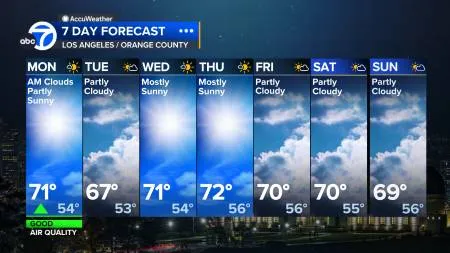

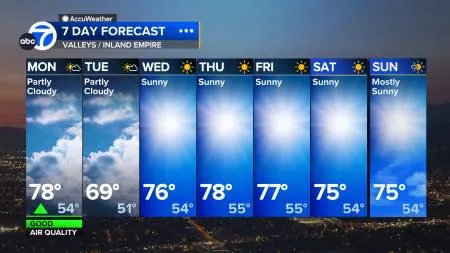

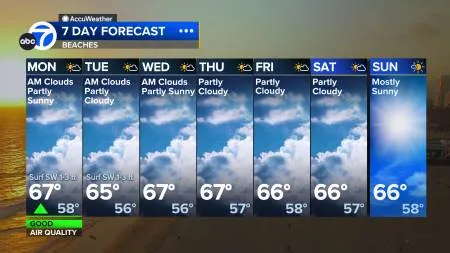

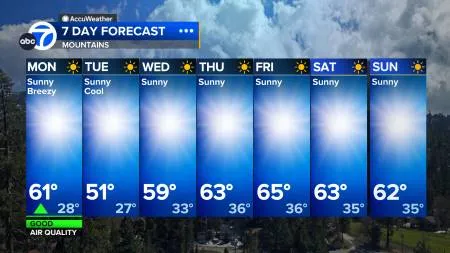

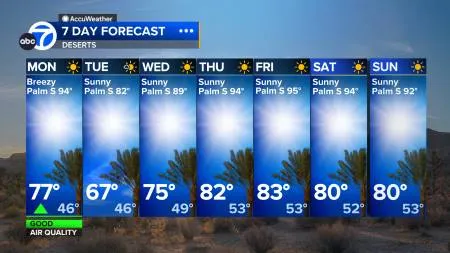

Frequently Asked Questions About Weather in LA California
Q: When is the best time to visit Los Angeles based on weather?
A: The shoulder seasons (Spring: March-May and Fall: September-November) are often considered the most pleasant times weather-wise, with comfortable temperatures and fewer crowds than peak summer. However, summer (June-August) is ideal for classic beach vacations, and winter (December-February) is great if you prefer cooler city weather or want to combine a city trip with mountain snow sports.
Q: Does it ever rain in Los Angeles?
A: Yes, Los Angeles has a rainy season during the winter months (December-February). However, rainfall is generally light and infrequent compared to many other parts of the world. sunny days are still common even in winter. Summers are almost completely dry.
Q: What are “May Gray” and “June Gloom”?
A: These terms refer to a common weather pattern in late spring and early summer along the coast of Southern California. A thick marine layer of clouds and fog develops overnight and can linger through the morning, sometimes into the afternoon, before burning off to reveal sunshine. This phenomenon keeps coastal areas cooler during this time.
Q: How much does the temperature vary within Los Angeles?
A: The temperature can vary significantly, sometimes by 20-30°F (10-15°C) or more, between coastal areas, inland valleys, mountains, and deserts on the same day. This is due to the region’s diverse microclimates.
Q: Do I need to pack warm clothes if visiting in summer?
A: Even in summer, it’s wise to pack a light jacket or sweater, especially if you plan to spend time near the coast in the evenings or visit air-conditioned indoor venues. Inland areas cool down at night, but less dramatically than the coast.
In conclusion, navigating the diverse weather in la california is part of the adventure of exploring this sprawling, dynamic region. By understanding the general climate patterns, the influence of microclimates, and checking local forecasts, you can ensure your trip is comfortable and enjoyable, no matter what experiences you seek.
